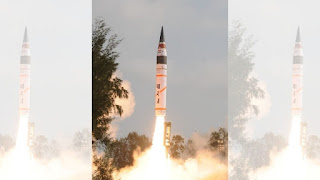Indian Army has deployed Pinaka and Smerch Multiple Rocket Launcher Systems (MRLS) at forward position near the China border to counter any threat arising across on the Line of Actual Control (LAC).
Pinaka weapon system is an autonomous rocket artillery system that can engage area targets up to 38km at mean sea level. At these altitudes, the ranges are enhanced significantly which further augments the deep strike capability of the weapon system.
A battery of six launchers of Pinaka can fire a salvo of 72 rockets in 44 seconds, thereby neutralising an area of 1000m by 800m. Talking about the weapon systems, deployed battery commander at the locationinformed that the Pinaka weapon system is indigenous multi rocket launcher system designed by Defence Research and Development Organisation (DRDO) and it is a state of art, completely autonomous weapon system, which can engage targets up to 38 kilometres at mean sea level and at higher altitudes, the ranges get significantly enhanced, which subsequently enhance our deep strike capability."
Pinaka & Smerch multi rocket launcher systems are designed to fire variety of ammunitions.
The Smerch system is the longest range conventional rocket system in Indian army inventory having a maximum range of 90 Km. A battery of four launchers can fire a salvo of 48 rockets in 40 seconds neutralising an area of 1200m by 1200m.
The features of the Smerch weapon system, is that the launcher is a very potent weapon in the arsenal of Indian artillery. The weapon can fire up to a range of 90 kilometres. Being based on a 10 by 10 tatra, it's extremely mobile, and there is no issue with mobility in any sort of terrain. There are 12 tubes in the cluster, and it fires 12 rockets in a span of 40 seconds.

